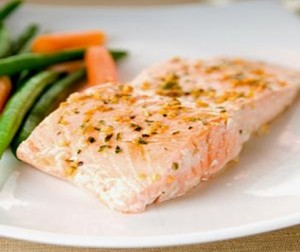Worried about your systolic blood pressure level? With these tips, you can lower your systolic blood pressure!
High blood pressure, or hypertension, is a health issue that a majority of Americans face sometime during their lives. Learning how to lower your systolic blood pressure is a great way to learn how to lead a healthier life.
The Basics Of Lowering Systolic Blood Pressure
Before you proceed to learn some tips on reducing your blood pressure, you should be aware of systolic and diastolic blood pressure.
What is systolic blood pressure?
Blood pressure is the measurement of the force of blood pushing against the walls of the arteries as it is pumped by the heart. Normally, it goes up and down. However, if it becomes constantly elevated, then this becomes a medical concern.
Blood pressure is measured in two numbers: the systolic number and the diastolic number. When your blood pressure is taken, it will be given to you in what looks like a fraction: one number over another. The upper one is the systolic number. It represents the maximum amount of pressure at any point of time. The lower number is the diastolic number, and represents the pressure during a relaxed state.
Acceptable levels of blood pressure range under 120/80 mmHg. If your blood pressure ranges between 120/80 and 139/89 mmHg, you are likely to be affected by a condition called pre-hypertension. This means that you will most likely have high blood pressure in the future if you don’t change your lifestyle. A reading of 140/90 mmHg or higher is considered to be high blood pressure.
The systolic number (the upper one) is the more important one to worry about when you consider your blood pressure level – this is the number that determines your stage of hypertension and how it should be treated.
Why Should You Lower Your Systolic Blood Pressure?
By lowering systolic blood pressure, you can reduce your risk of facing a heart disease, heart attack, stroke, and other medical conditions in the future.
The lifestyle changes you may have to make to lower systolic blood pressure will make you a happier and healthier person overall!
Tips For Lowering Systolic Blood Pressure
Tip #1: Consult A Doctor
If you have a high systolic blood pressure reading, the first thing to do is talk to your doctor about treatment possibilities. There is a chance that they will put you on medication. The most commonly prescribed type of medication is diuretics, also known as water pills, which flush excess water and sodium from your body to lower the blood pressure.
Tip #2: Maintain An Exercise Routine
Sometimes systolic blood pressure levels can be controlled simply by opting for a healthier lifestyle that includes regular exercise.
It is recommended that people with pre-hypertension exercise for at least 30 to 60 minutes a day, as this will reduce their chances of facing high blood pressure later in life. It is necessary to do this on a daily basis for best results.
You can try walking, cycling, swimming, or jogging, as these measures help in lowering systolic blood pressure.
Tip #3: Follow A Healthy Diet
Changing your diet can help you bring down your systolic blood pressure too. You need to maintain a healthy weight, and you can do this by quitting smoking, reducing the amount of alcohol you drink, and eating a healthy diet.
A hypertension diet should include greater amounts of fruits, vegetables, and whole grains and low quantities of fat and sodium. The nutrients potassium, magnesium, and calcium are important components of a healthy blood pressure diet.

Food Items That Lower Blood Pressure
It has been scientifically proven that healthy food items can help lower blood pressure.
Here are some of the best food items you can opt for.
- Low-Fat and Non-Fat Milk, Yogurt, and Cheese: Calcium has been proven to help regulate blood pressure, and most people don’t get enough calcium in their diet. It’s important that these dairy products are low or non-fat, however, because a high fat intake contributes to blood pressure. Dairy foods are often fatty, so be sure to read the labels when at the grocery store!
- Fruits and Vegetables: These are always important – especially citrus fruits, bananas, melon, spinach, strawberries, and tomatoes. What you really want from your fruits and vegetables for lowering systolic blood pressure is potassium. Potassium can be found in high quantities in most fruits and vegetables.
- Bread and Cereal: Whole grain rice, bread, pasta, and oatmeal are options that you can try out in your daily diet.
- Nuts and Seeds: These are rich in magnesium, which is one of the best minerals when it comes to lowering your blood pressure. Turn to almonds, soybeans, kidney beans, and lentils as sources of magnesium, and they’ll surely help.
Other Ways to Lower Blood Pressure
There are other controllable actions that contribute to high blood pressure. If you fall under any of these factors, it’s important to speak to your doctor and change your lifestyle soon. Diet is important, but it’s not everything!
Factors that contribute to high blood pressure and put you at risk for heart disease are:
- Tobacco use
- Obesity
- High cholesterol
- Lack of exercise
Age, diabetes, and a family history of high blood pressure can contribute as well, but unfortunately these are impossible to change. If you take the right steps without losing time, you can easily bring down your blood pressure in a healthy way!